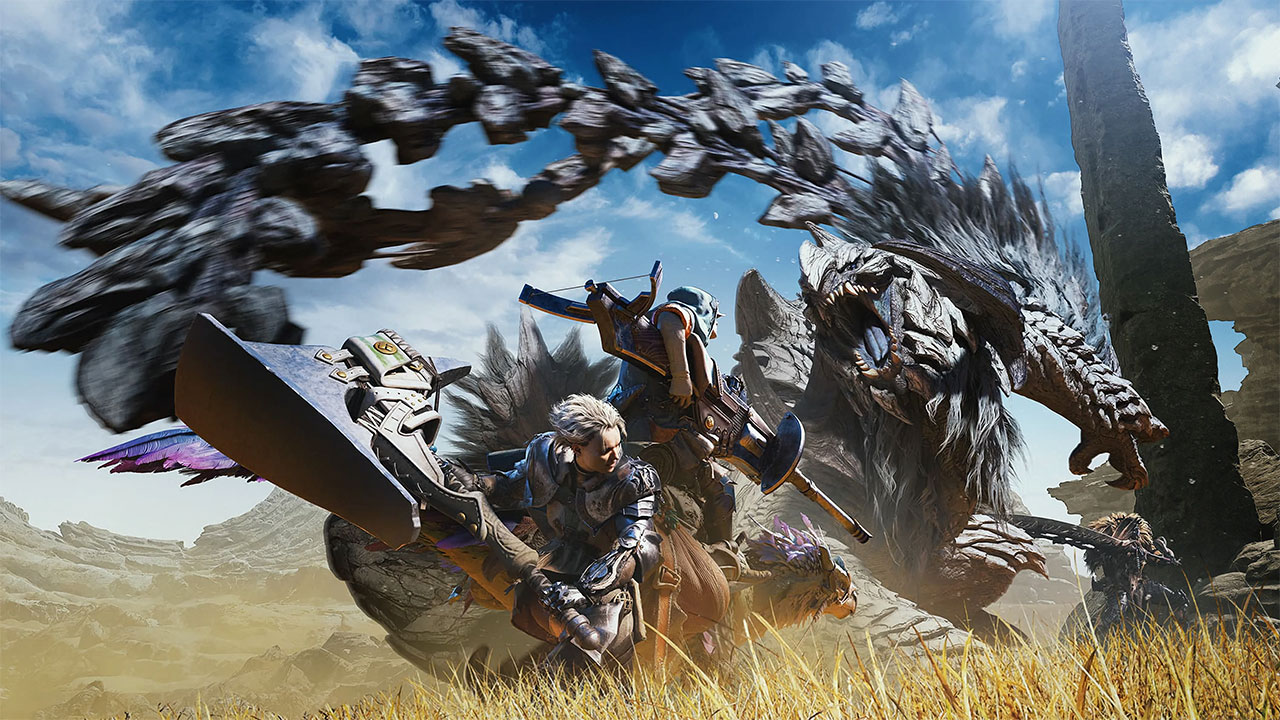Back in 2018, the Monster Hunter series would forever be changed with the release of Monster Hunter: World. From being a relatively niche series that had been mostly exclusive on Nintendo systems for several years, to a multi-platform global phenomena, Monster Hunter: World changed the trajectory of the franchise significantly.
Now, seven years later, the series takes another big leap with the release of Monster Hunter Wilds. The next major installment in the franchise introduces major changes and additions to its gameplay as well as features that have not been present in previous installments. Available on the PlayStation 5, Xbox Series X/S, and PC, Monster Hunter Wilds is the first game in the franchise to include crossplay, allowing for a much wider player base than ever before.
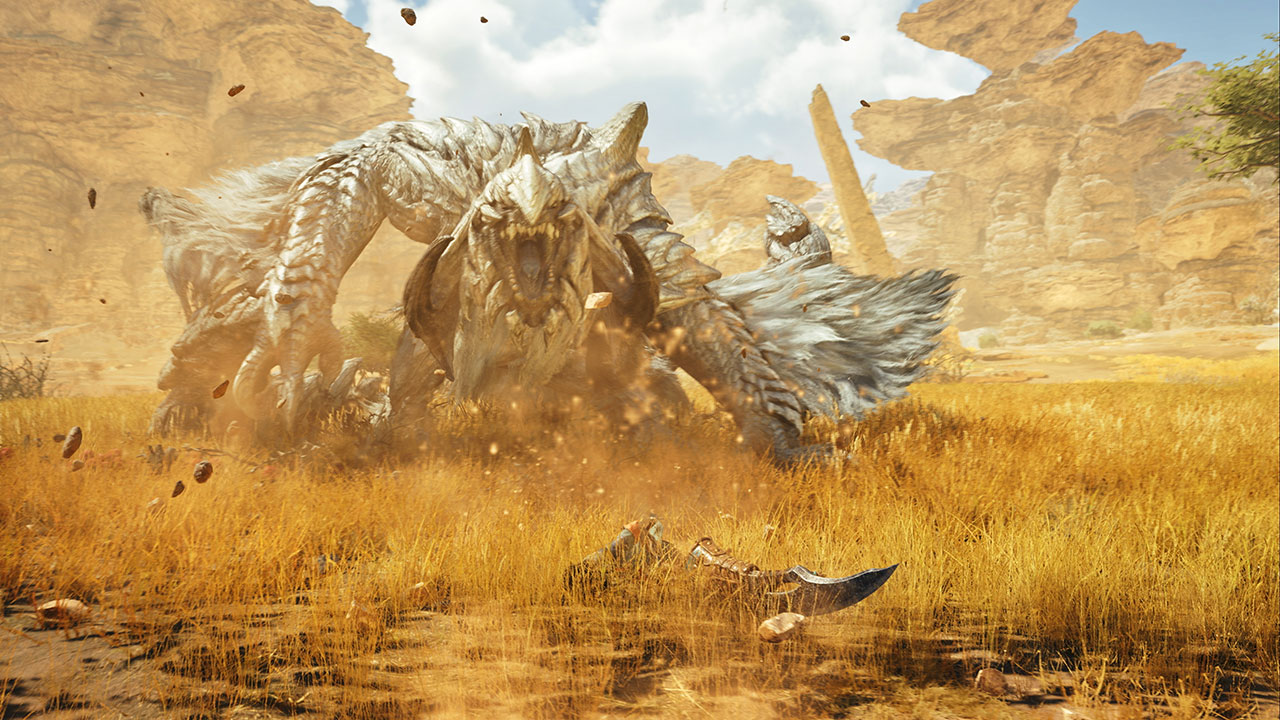
Unlike Monster Hunter World and Rise which are set in completely new locations, Capcom has mixed the familiar with the unfamiliar for Monster Hunter Wilds, as the game is set in the Old World, where most of the previous games are set, albeit in the new and uncharted Forbidden Lands region. After meeting a child named Nata who claims to be from the supposedly uninhabited region, the player hunter is tasked to bring Nata back home and investigate the White Wraith that is said to be terrorizing Forbidden Lands.
Without any spoilers, Monster Hunter Wilds features a more pronounced story campaign than previous installments in the series, not just in its plot and narrative but also in its cast of characters and the roles they play. The characters all feel more part of the story rather than just a set of side characters. Having the game be set in an unexplored area of the Old World instead of a completely new location helps tie the story to some of the previous games in the series. The delivery of the story is also greatly aided by the game’s myriad of in-game and pre-rendered cutscenes and the player hunter being voiced this time around sort of rounds everything out.
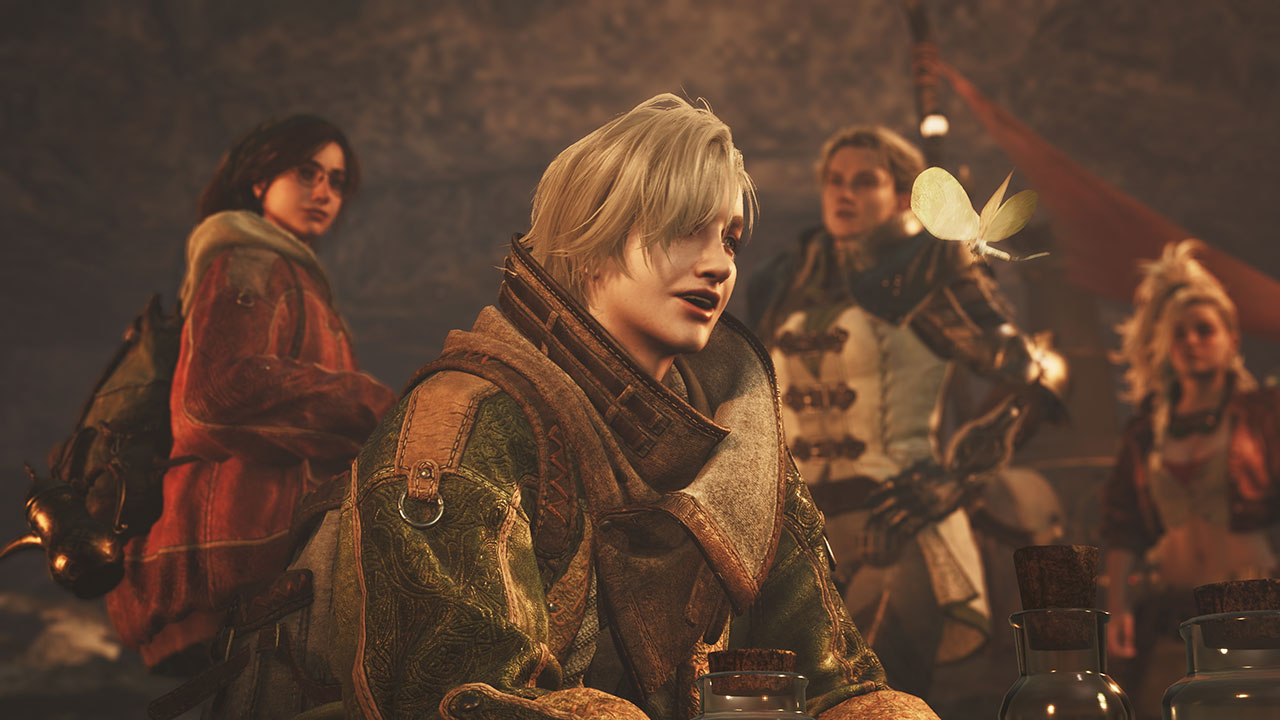
Monster Hunter Wilds is the first in the series that features a large open world map, allowing players to explore its different locales and biomes without dealing with loading screens. The open world map makes hunting for monsters outside of specific hunting quests feel more immersive. And the game’s new and rather unique climate system, which has biomes cycle between three states, adds some variety in the hunting experience, both during open world hunting and hunting quests.
The different biomes of the Forbidden Lands are very distinct and the climate system changes how each one looks significantly. As always, the environments and landscapes of Monster Hunter Wilds look amazing and their ecosystems feel very alive thanks to the abundance of endemic inhabitants.
To complement the larger open world map and to make it easier for players to explore and hunt within them, Capcom has introduced the new pop-up camp system. Aside from the familiar hidden camps that can be found and unlocked, players have the option to set up camps in other discoverable locations. However, these new spots aren’t as safe and hidden as the others so monsters will be able to come and destroy them and players will either have to wait for them to be repaired over time or spend Guild Points to fix them up instantly. The more dangerous pop-up camp locations are meant to give players the option to fast travel to a camp that’s closer to where monsters are but at the risk of it being potentially destroyed. It’s a nice expansion of the familiar camp system that gives players more options.
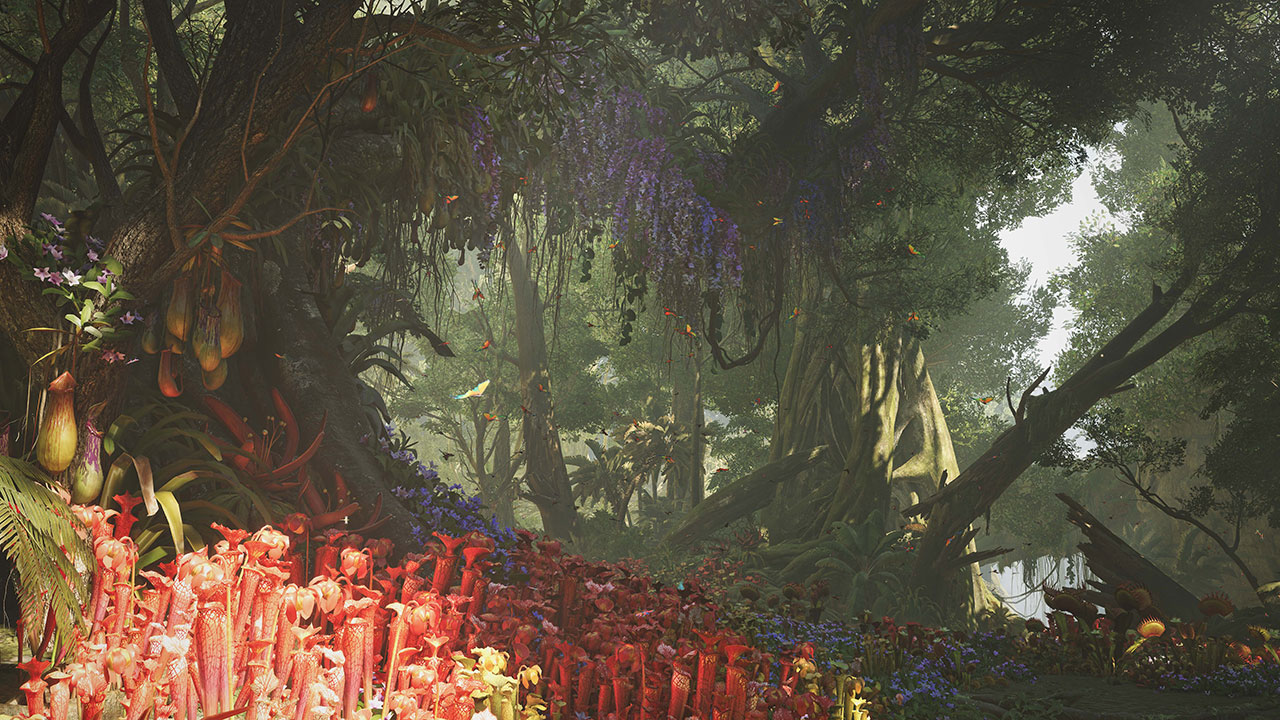
The core gameplay loop of the series, hunting down and defeating giant monsters for their materials, is executed very well in Monster Hunter Wilds. You can either hunt monsters you encounter in the open world, accept specific hunting quests from your handler, or join other hunts in multiplayer. Capcom has done a great job at streamlining the hunting experience by not only giving you multiple options for initiating a hunt but also by connecting them together, such as with Field Surveys and Investigations. Hunting monsters encountered in the open world will initiate a Field Survey, which players can then turn into Investigations if they wish to repeat the same hunt again.
Each of the game’s weapons have received new moves and mechanics, as well as changes to existing ones. Some examples include an additional move at the end the Charge Blade’s Amped Elemental Discharge, new overcharged phials, and a faster way to charge the shield with phials, among many others. Weapons now feel a bit more dynamic or flexible, and work well with the game’s new systems – Focus Mode, Focus Strike, and the Wounds system.
Focus Mode, Focus Strike, and the Wounds system are by far the biggest additions introduced to Monster Hunter Wilds’ combat. While the aiming mode in previous games was mostly reserved to ranged weapons and tools such as the slinger or clutch claw, Focus Mode gives every weapon a reason to use it. It makes hitting monsters easier as it allows you to properly aim your strikes, even mid-animation, so big attacks like the Charge Blade’s Super Amped Elemental Discharge are now easier to land.
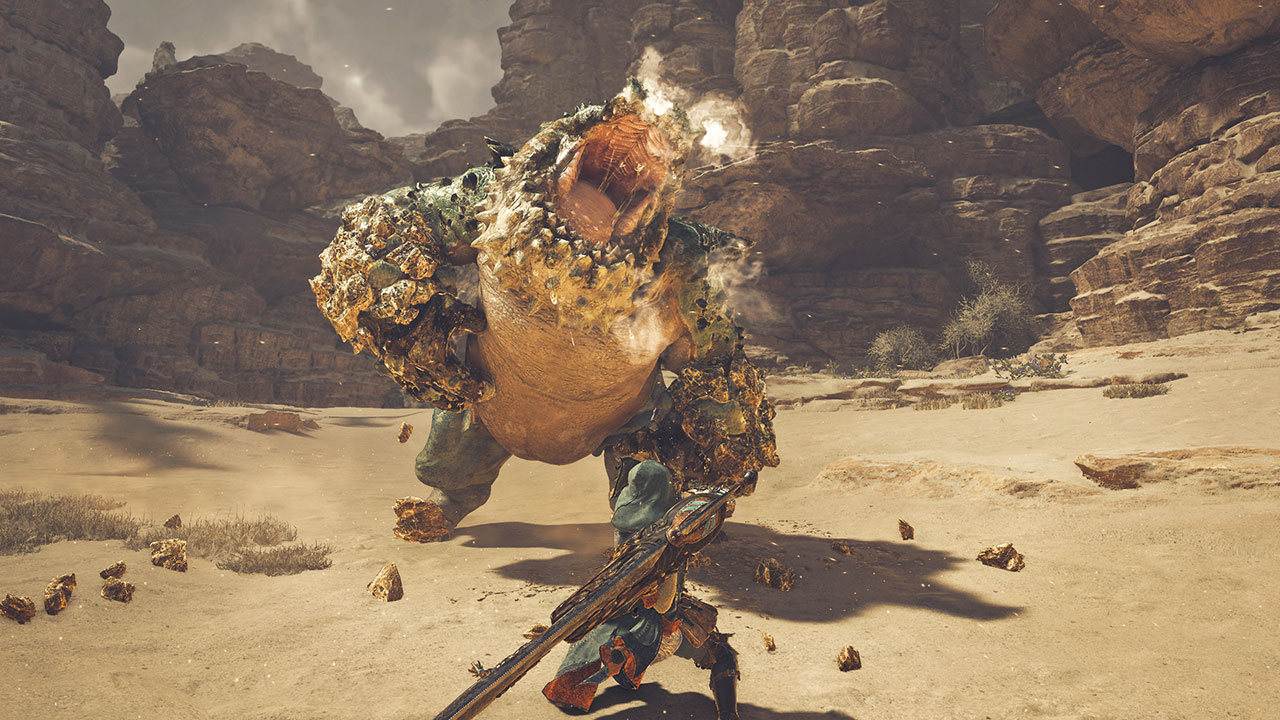
The Focus Strike and Wounds system then work in tandem to add another layer to the game’s combat. Hitting certain parts of a monster continuously opens up wounds that can then be followed up with a Focus Strike. Each weapon’s Focus Strike works differently, but in general, successfully landing one on an open wound will trigger a strong attack which not only stuns the monster but also grants either the option for a more powerful follow-up attack or a boost to the weapon.
The Focus Strike and Wounds system help keep combat flow better and stay active, with less overall downtime as players switch between executing their suite of regular attacks and Focus Strikes on open Wounds.
The wound system does introduce a bit of a caveat to combat in multiplayer as hunters will need to be mindful of who gets to use their respective Focus Strikes on an open wound as some weapons need them to access some of their more powerful moves, such as the Charge Blade’s Savage Axe mode. While perfect coordination isn’t completely necessary for success in most hunts, it’s just something that players may need to keep in mind and consider when they hunt with others.
All the changes and additions to weapons and combat help make the experience feel new as players learn and find the best ways to utilize their chosen weapon. However, there is a feeling that you feel a bit overpowered as many of the game’s earlier monsters seem to go down a bit too easily and quickly, especially when you’ve gotten a better handle of your chosen weapon and the particular monster’s moves. Thankfully, the game’s hardest content still provides a decent challenge and Capcom will likely introduce even more difficult monsters in future updates.

One new feature in Monster Hunter Wilds that Capcom took from 2021’s Monster Hunter Rise but has greatly expanded on is the riding system. In Monster Hunter Wilds, players are able to ride their Seikret companion to travel through the game’s large maps faster, which complements its open world nature. Riding the Seikret makes both horizontal and vertical traversal much easier as it’s able to jump and climb higher, farther, and much quicker than the hunter. With the larger map, being able to travel faster with the Seikret eliminates a lot of the downtime spent traversing the map so you can spend more time in combat.
The Seikret is also used for another one of the game’s new features, bringing two weapons during hunts. Players can quickly change between their two chosen weapons when they ride their Seikret, even in the middle of combat, opening up a lot of possibilities during hunts for both solo and co-op players. They can switch between melee and range weapons depending on the situation or save the secondary weapon for specific situations such as applying buffs to themselves or their party, applying debuffs to the monster, or for breaking parts. Or just switching weapons when you feel like it.
To accommodate bringing two weapons during hunts, Capcom has changed how skills show up on equipment. Offensive skills are now tied to weapons while defensive and utility skills now show up on armor pieces. This allows players to generally use the same armor set and still have it be useful even if they switch weapons.
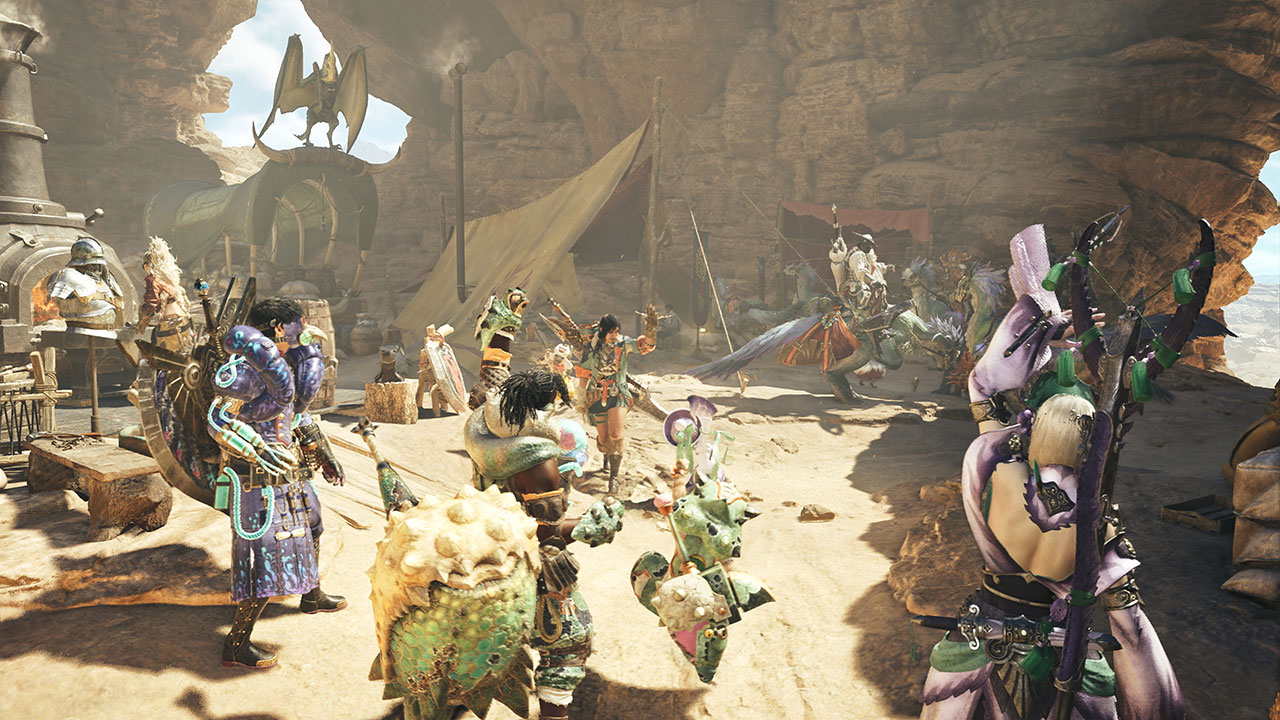
Capcom has also made armor non-genered locked so players can now sport a mix of both male and female armor parts if they wish to do so. It’s just one of many new accessibility features that Capcom has introduced in Monster Hunter Wilds. Some of the others include item loadouts, an expanded radial menu and keyboard shortcuts,a ton of adjustable UI and gameplay options, armor set recommendations, quick cooking, and the new Support Hunter system.
One of the best traits of the series is that it gives players the choice to either make the most of all of the game’s features and mechanics or just pick and choose which ones work for them, and the same is true with Monster Hunter Wilds. You can make use of the additional pop-ups camps or simply unlock the few safe ones, manually traverse the open world to get to your chosen location or use the fast travel, or use just some or all the game’s items that are available to you. And Monster Hunter Wilds definitely gives you a large plethora of options to choose from.
Conclusion
Overall, Monster Hunter Wilds is undoubtedly the biggest in the series so far. Capcom has taken quite a number of major leaps and risks with this latest installment, and it has mostly pulled them off. The new elements it’s introduced all work together to make it feel like a much larger yet more streamlined game, from its open world map and more engaging and immersive story to its new combat mechanics, improved features, and more. Monster Hunter Wilds successfully takes the series to much greater heights while also keeping the spirit of its core experience intact. And with regular updates and new content on the horizon, it’ll just keep getting better from here.


